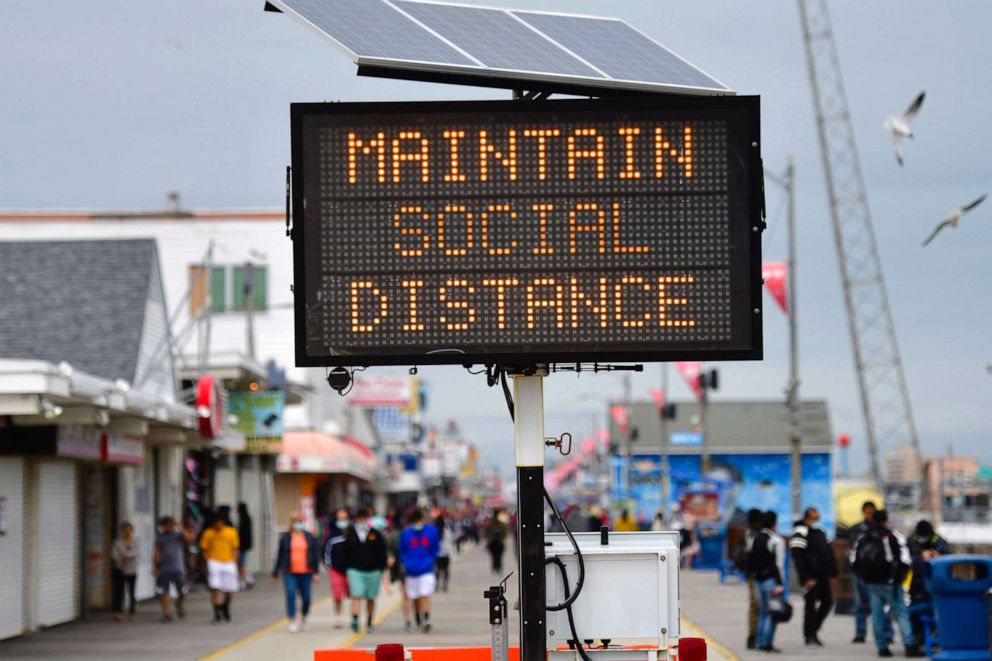Simple steps for safer socializing: Analysis
We are working to suppress and contain the virus, not each other.
As states and businesses start to reopen, people across the country are trying to figure out how to be safe in this new normal.
The good news is that the we all now have another tool in our toolbox – an appreciation and understanding of public health and prevention. People have made tried and true public health interventions a part of their daily lives. They watch and share disease models with interest, are wearing masks in public to protect themselves and others, and thousands have taken contact tracing courses so they can help identify people who may have come into contact with an infected person. We are all ready to leave the house and restart our social lives in the real world. And we can do that safely, if we follow a few tips:
Make (flexible) plans
Many tasks will take longer to accomplish and every public space will have to accommodate social distancing standards, including parks, grocery store aisles and restaurants. Assume the bulk of your socializing will need to be intentional. We can no longer decide at the last minute to go see a movie or to show up at a favorite restaurant on a Friday night and squeeze into a seat at the bar. For the foreseeable future, nearly every activity outside our homes will need to be planned in advance and you’ll need to maintain a flexible mindset. Plans may need to change depending on emerging guidance from public health officials in our communities. The activities we could do last week may not be wise or allowed next week based on local transmission rates.
Take a temperature check
A wise habit to adopt – along with frequent handwashing and wearing masks in public – is to take your temperature on a daily basis and be open to changing your plans based on the result. An elevated temperature may be the only sign of an asymptomatic COVID-19 infection, so staying home if you have a fever is an important way to potentially limit transmission to friends and loved ones in your personal life.
For the public at large, quick temperature checks – either with non-contact readers or thermal imaging devices – are another line of defense that you should expect to see. As workplaces reopen, office buildings will begin to require a temperature reading before entering in order to prevent transmission among employees. The faster these technologies are deployed, the sooner we can feel safe returning to some of our normal activities.

Embrace contact tracing
Until a COVID-19 vaccine is created and mass produced, public health professionals will be drawing on decades of experience identifying people who were in contact with newly diagnosed cases – a process known as contact tracing. But they need our help, understanding and cooperation. Without experience, some folks may be hesitant to embrace contact tracing and have questions about how the process will protect their privacy and support their autonomy.
It will be the responsibility of public health officials to gain the public’s trust in the process and to educate them about safe ways to comply with contact tracing efforts in order to reduce the spread of COVID-19. We can do this without stigmatizing anyone who participates — remember that we are working to suppress and contain the virus, not each other.
Protect every generation
It’s been touching — but difficult – to see the images of families “visiting” through windows or at a distance. This is a key way to prevent social isolation, to which older adults are particularly susceptible, while also safeguarding them against COVID-19. As a society we have become more aware of the ways older adults are uniquely vulnerable to COVID-19, and in turn we are also more thoughtful about how to keep them safe. Neighbors and loved ones have stepped up to run errands and do necessary shopping for seniors, and this practice should continue going forward. The reopening of retail stores doesn’t mean seniors should patronize them as they did pre-pandemic. The advent of early store hours dedicated to those over 65 may be with us for the near future and should likely be spread beyond the grocery industry to other types of retail.
Stay the course
Any new habit feels strange at first, but we know what works, and we have been making a difference. Wearing a mask in public, washing our hands frequently and wiping down our high-touch surfaces on a regular basis are critical habits that are here to stay. These are proven ways to dramatically reduce the transmission of the novel coronavirus between individuals, and we need to stick with them particularly as we begin to return to public life. Keep faith that the inconveniences and disruptions we are experiencing are in service of limiting the staggering toll COVID-19 has already taken on our communities. It may not be what we’re used to, but it will be part of our foreseeable future if we want to stay safe.
Jay Bhatt, a practicing internist and Aspen Health Innovators fellow, is an ABC News contributor. Bechara Choucair is a physician and chief health officer at Kaiser Permanente. His book, "Precision Community Health: Four Innovations for Well-being," was published this month.






